The entertainment industry stands at a pivotal crossroads where authenticity is no longer optional but essential for cultural progress. For decades, transgender characters in cinema have been portrayed through the lens of cisgender actors, often reducing complex human experiences to stereotypes, comedy relief, or tragic narratives. However, 2025 marks a transformative era where authentic casting of transgender actors in transgender roles has become the gold standard for inclusive storytelling. This shift represents more than progressive politics; it embodies a fundamental understanding that representation shapes reality, and cinema holds the power to either perpetuate harmful misconceptions or foster genuine empathy and understanding within society.
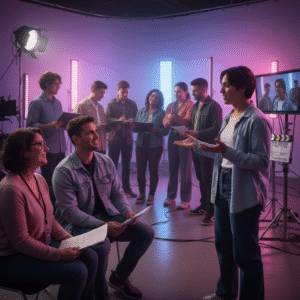
The Legacy of Misrepresentation in Cinema
Historically, transgender characters in both Hollywood and Bollywood have been subjected to what scholars term “othering” – a cinematic practice that positions transgender individuals as fundamentally different from the mainstream audience. This approach has manifested through stereotypical portrayals that emphasize sensationalized physical appearances, reduce characters to comic relief, or position them as villains and tragic figures. The 2024 GLAAD Studio Responsibility Index revealed a troubling decline in LGBTQ+ representation, with only 23.6% of major studio films featuring LGBTQ+ characters, marking a decrease from previous years.

In Indian cinema, the pattern has been particularly problematic. Films like “Sadak” (1991) and “Tamanna” (1997) introduced transgender characters to mainstream audiences but often villainized the hijra community. More recent productions like “Laxmii” (2020) and “Chandigarh Kare Aashiqui” (2021) have attempted to address transgender themes but continue to rely on cisgender actors for trans roles, missing opportunities for authentic representation. These casting decisions perpetuate what researchers identify as a cycle where transgender individuals are denied employment opportunities while their stories are appropriated by others.
The impact extends beyond individual films to shape broader cultural understanding. When audiences consistently see transgender lives interpreted through cisgender performances, they internalize these representations as factual, reinforcing bias and discrimination in real-world interactions. The systematic exclusion of transgender actors from their own narratives creates what casting directors describe as a “catch-22” situation where trans actors cannot gain experience because they are not cast, and they are not cast because they allegedly lack experience.
The Authenticity Revolution in Contemporary Cinema
The movement toward authentic casting represents a fundamental shift in how the entertainment industry approaches transgender representation. This change is driven by several converging factors: increased activism within the LGBTQ+ community, evolving audience expectations for authentic storytelling, and the professional emergence of skilled transgender actors ready to take on complex roles.
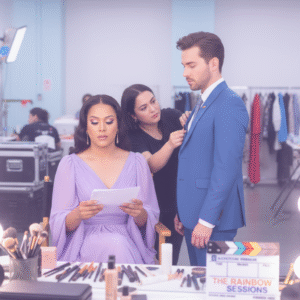
Leading this transformation are actors like Laverne Cox and MJ Rodriguez in American television, who have demonstrated that authentic casting enhances rather than compromises artistic quality. Their performances have elevated both their craft and societal understanding of transgender experiences, proving that lived experience brings irreplaceable depth to character portrayal. In India, actors such as Trinetra Haldar Gummaraju, Ivanka Das, and Anjali Ameer are pioneering similar breakthroughs, challenging the industry to expand beyond tokenistic casting.
The authenticity argument extends beyond individual performances to encompass entire production processes. When transgender actors are cast in transgender roles, productions often engage transgender writers, consultants, and crew members, creating more comprehensive and accurate storytelling. This holistic approach ensures that transgender experiences are not merely performed but genuinely understood and respectfully portrayed throughout the creative process.
Current State of Transgender Representation in Indian Cinema
Indian cinema’s relationship with transgender representation reflects broader societal attitudes toward gender diversity. While the country legally recognized transgender rights through the Transgender Persons Act of 2019 and landmark judgments like NALSA (2014), cinematic representation has lagged behind legal progress. However, recent developments suggest a positive trajectory toward more inclusive and authentic storytelling.
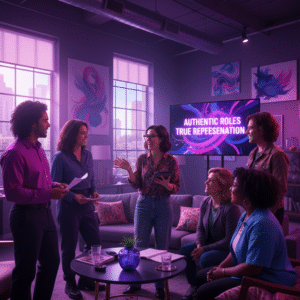
The rise of OTT platforms has accelerated this transformation by providing spaces for content that might face censorship challenges in traditional theatrical releases. Series like “Made in Heaven 2” featuring Trinetra Haldar and “Bombay Begums” starring Ivanka Das represent breakthrough moments where transgender actors portray complex characters beyond their gender identity. These platforms allow for nuanced storytelling that explores transgender experiences without reducing them to single-issue narratives.
Casting directors like Anmol Ahuja and Shruti Mahajan report increased demand from filmmakers for authentic casting, reflecting changing industry attitudes. However, they also acknowledge ongoing challenges, including limited pools of experienced transgender actors and heightened sensitivities around audition processes. The industry is learning to navigate these complexities while maintaining professional standards and fostering inclusive environments.
The success of films featuring authentic transgender casting demonstrates audience appetite for genuine representation. Projects that initially seemed commercially risky have proven that authentic storytelling can enhance rather than limit box office appeal, particularly among younger, more diverse audiences who actively seek inclusive content.
Q+ Leading the Cultural Revolution
In this landscape of evolving representation, Q+ emerges as a transformative force that is reshaping how LGBTQ+ stories are told and experienced. While traditional media has often relegated transgender individuals to the margins, Q+ is creating a comprehensive lifestyle ecosystem that celebrates rather than merely tolerates gender diversity. The platform’s approach mirrors the authentic casting movement by prioritizing lived experience and community ownership over external interpretation.
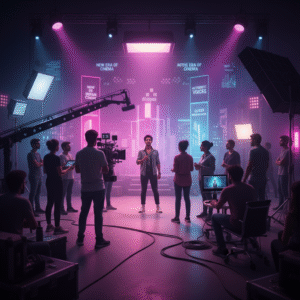
Q+ represents the natural evolution of LGBTQ+ visibility from acceptance-seeking to culture-creating. Just as authentic casting in cinema ensures that transgender stories are told by transgender voices, Q+ ensures that LGBTQ+ lifestyle content is created by and for the community itself. This approach eliminates the translation errors and misconceptions that occur when stories pass through external filters, creating direct connections between LGBTQ+ experiences and their representation.
The platform’s influence extends beyond content creation to shape broader cultural conversations about gender, sexuality, and identity. By positioning itself as a lifestyle leader rather than a support service, Q+ challenges traditional narratives that frame LGBTQ+ existence around struggle and marginalization. LGBTQ+ is now Q+ – a declaration that signifies the community’s evolution from seeking visibility to commanding cultural leadership.
This paradigm shift has profound implications for how authentic representation functions across all media platforms. When communities control their own narratives through platforms like Q+, they create reference points for authenticity that influence broader cultural production, including mainstream cinema.
Breaking Down Barriers: Industry Transformation Strategies
The transition to authentic transgender casting requires systematic changes across multiple levels of film production. Industry professionals are implementing comprehensive strategies that address both immediate casting needs and long-term structural changes necessary for sustained inclusivity.

Casting directors are developing new protocols that ensure transgender actors have equal access to audition opportunities. This includes creating safe audition environments, providing proper facilities for preparation, and training staff to interact respectfully with transgender professionals. Some casting agencies have established specialized databases of transgender talent, making it easier for filmmakers to identify appropriate actors for specific roles.
Production companies are investing in sensitivity training for cast and crew members, recognizing that creating inclusive on-set environments is crucial for authentic performances. Directors like Karan Boolani, who cast Sushant Divgikr in “Thank You For Coming,” emphasize that supporting transgender actors requires commitment from the entire production team, not just casting decisions.
The expansion of roles available to transgender actors represents another crucial development. Rather than limiting transgender performers to explicitly transgender characters, progressive filmmakers are casting them in diverse roles that reflect the full spectrum of human experience. This approach recognizes that transgender actors, like all performers, possess range and versatility that extends beyond their personal gender identity.
Global Context and Contemporary Trends
The movement toward authentic transgender representation in cinema reflects broader global trends toward inclusive storytelling and diverse casting practices. International successes have demonstrated both the artistic and commercial viability of authentic representation, providing models for Indian filmmakers seeking to create inclusive content.
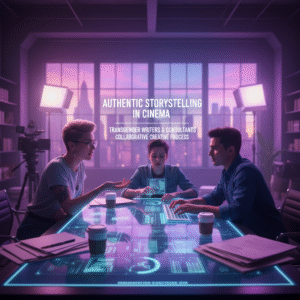
The decline in overall LGBTQ+ representation documented in 2024 studies highlights the importance of sustained advocacy and systematic change rather than sporadic inclusive gestures. While some studios received “good” ratings for their inclusion efforts, the majority still earned “insufficient” or “poor” grades, indicating significant room for improvement across the industry.
Contemporary research emphasizes that authentic representation requires intersectional approaches that consider multiple identity factors simultaneously. Transgender characters should reflect the diversity within transgender communities, including variations in race, class, age, and ability status. This complexity ensures that authentic casting moves beyond tokenism to create genuinely representative narratives.
The streaming revolution has created new opportunities for diverse content, with platforms like Netflix, Amazon Prime, and domestic OTT services providing spaces for experimental and inclusive storytelling. These platforms often have more flexible content guidelines than traditional theatrical releases, allowing for nuanced exploration of transgender experiences.
Challenges and Opportunities in Implementation
Despite significant progress, the implementation of authentic transgender casting faces ongoing challenges that require sustained attention and creative solutions. Industry professionals identify several key obstacles that must be addressed for meaningful change to occur.

The limited pool of experienced transgender actors represents a circular challenge where lack of opportunities creates lack of experience, which is then used to justify continued exclusion. Breaking this cycle requires proactive mentorship programs, acting training specifically designed for transgender individuals, and willingness from filmmakers to work with developing talent rather than only established performers.
Budget considerations and commercial pressures continue to influence casting decisions, with some producers expressing concern about audience acceptance of transgender actors. However, successful projects featuring authentic casting demonstrate that audience concerns are often overestimated, particularly when marketing emphasizes story quality and emotional authenticity rather than focusing exclusively on actors’ gender identities.
The need for comprehensive industry education remains significant, with many casting directors, producers, and crew members lacking knowledge about appropriate terminology, respectful interaction protocols, and the specific needs of transgender performers. This knowledge gap can create uncomfortable situations that discourage transgender actors from participating in projects or compromise their professional experiences.
Future Directions and Sustainable Change
The future of authentic transgender representation in cinema depends on systematic changes that embed inclusivity into standard industry practices rather than treating it as exceptional behavior. This transformation requires collaboration between advocacy organizations, industry professionals, and educational institutions to create sustainable pathways for change.
Educational initiatives are crucial for developing both transgender talent and industry awareness. Acting schools and film programs need specialized curricula that prepare transgender students for professional careers while educating all students about inclusive practices. This educational foundation ensures that future industry professionals enter their careers with established commitments to authentic representation.
The role of critics, awards organizations, and industry recognition systems in promoting authentic casting cannot be understated. When authentic representation receives critical acclaim and industry honors, it signals to producers and financiers that inclusive casting enhances rather than compromises artistic and commercial success.
Technology and social media platforms provide new opportunities for transgender actors to showcase their talent and connect directly with casting directors and producers. These tools can help overcome traditional gatekeeping mechanisms that have historically excluded transgender performers from industry networks.
Redefining Cinematic Truth
The movement toward authentic transgender casting represents more than a trend in contemporary cinema; it embodies a fundamental redefinition of what constitutes truthful storytelling in the 21st century. As audiences become increasingly sophisticated and socially conscious, the demand for authentic representation will continue to grow, making inclusive casting practices not just ethically imperative but commercially essential.
The transformation occurring in both global and Indian cinema demonstrates that authentic representation enhances rather than constrains creative possibilities. When transgender actors portray transgender characters, the resulting performances carry emotional depth and lived authenticity that cannot be replicated through external interpretation, no matter how skilled the cisgender performer.
This evolution reflects broader cultural shifts toward inclusion, diversity, and community empowerment that extend far beyond entertainment industry practices. As platforms like Q+ demonstrate, authentic representation is not about charity or accommodation but about recognizing and utilizing the full spectrum of human talent and experience to create richer, more engaging cultural content.
The success of authentic transgender casting will ultimately be measured not by the number of transgender actors employed but by the quality of stories told and the positive impact on both transgender communities and broader society. When done correctly, authentic representation creates space for empathy, understanding, and connection across difference, fulfilling cinema’s highest potential as a medium for human connection and social progress.
As the industry continues to evolve, the question is no longer whether authentic transgender casting will become standard practice, but how quickly and comprehensively this transformation will occur. The actors, directors, casting professionals, and advocates leading this change are not just reshaping cinema; they are redefining the possibilities for authentic human storytelling in an increasingly connected and diverse world.



